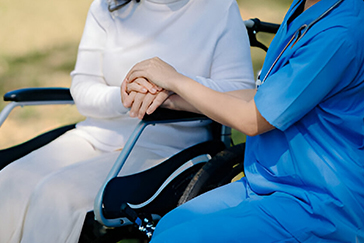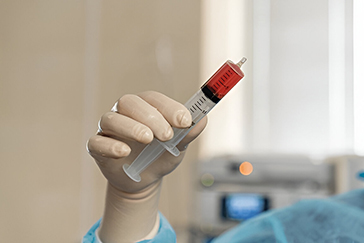 Book Appt.
Book Appt.
 Call Now
Call Now


Introduction
Aplastic anaemia is an uncommon blood disorder that can be fatal. It happens when your bone marrow is unable to create enough platelets and blood cells. Individuals suffering from aplastic anaemia are susceptible to serious infections, blood issues, heart issues, and other complications. While there are therapies for aplastic anaemia, stem cell transplantation is the only way to fully address the condition.
Symptoms
The signs of aplastic anaemia usually take weeks or months to manifest, so you might not notice any changes in your body right away. There are situations where people have acute, severe symptoms right away. If you have symptoms, they could include headache, fever, dizziness, fatigue, increased risk of bleeding or bruising, dyspnoea, pale skin tone, headaches, and recurrent virus infections that persist longer than expected. Aplastic anaemia shares some of its symptoms with less serious conditions. You do not necessarily have aplastic anaemia if you have the flu or a cold. If you've been sick for several weeks and are always tired, you should visit a doctor.
Causes
While the exact reasons for aplastic anaemia are unknown to experts, it is often caused by an immune system attack on the bone marrow, which prevents it from producing stem cells. Aplastic anaemia can result from a number of medical diseases, genetics, medical treatments, and exposure to particular poisons.
Medical conditions
The following medical conditions may increase your risk:
Lupus and other autoimmune disorders, as well as viral infections like HIV, parvovirus B19, CMV, and Epstein-Barr virus.
Paroxysmal nocturnal haemoglobinuria is an acquired disorder in which red blood cells disintegrate excessively quickly.
Pregnancy.
Inherited conditions
Experts link aplastic anaemia to a variety of inherited bone marrow failure illnesses. Bone marrow failure occurs when the bone marrow does not create enough stem cells. Fanconi anaemia, dyskeratosis congenita, Shwachman-Diamond syndrome, Diamond-Blackfan anaemia, and Pearson syndrome are all hereditary conditions.
Medical treatments
Certain medical treatments, such as those used to treat autoimmune illnesses and radiation and chemotherapy for cancer, increase your chances of developing aplastic anaemia. Extended exposure to carcinogens such as arsenic and benzene may also increase your risk of getting aplastic anaemia.
Complications
Aplastic anaemia can cause anaemia, severe infections, profuse bleeding, arrhythmia or heart failure, and myelodysplastic syndrome, all of which can be fatal.
Diagnosis
Aplastic anaemia is diagnosed by healthcare providers using physical examinations, blood testing, and genetic studies. Tests can include:
Complete blood count (CBC) and differential. This checks and quantifies all five types of white blood cells.
A peripheral blood smear. Medical pathologists use a microscope to study your blood cells and platelets.
Reticulocyte count. This test determines the total amount of immature red blood cells (reticulocytes).
Bone marrow aspiration and biopsy. Providers perform these operations to retrieve bone marrow tissue, which pathologists evaluate under a microscope.
Management and Treatment
Treatments differ according to your situation. Aplastic anaemia, for example, might arise as a side effect of cancer or autoimmune disease treatment. In that instance, providers may be able to treat aplastic anaemia by altering their therapy. If tests show that your blood cell levels are lower than usual but you have no symptoms, your provider may diagnose you with moderate aplastic anaemia. In that situation, your provider may recommend monitoring your overall health and blood counts so that they can act immediately if your condition worsens.
Treatments for more serious types of aplastic anaemia include:
Immunosuppressants. These medications prevent your immune system from attacking your stem cells. Immunosuppressants used to treat aplastic anaemia include Atgam® (antithymocyte globulin injection) and Sandimmune® (cyclosporine).
Blood transfusion. Transfusions replace both red blood cells and platelets. Transfusions do not cure aplastic anaemia, however, they can alleviate some symptoms.
Antibiotics. Aplastic anaemia raises the risk of bacterial infection. Antibiotics help to treat infections.
Allogeneic stem cell transplant. Providers replace damaged stem cells in your bone marrow with healthy stem cells obtained from donated blood or bone marrow.
Side effects
Graft-versus-host disease is a complication of allogeneic stem cell transplants.
Immunosuppressant medicines increase the risk of infection.
Blood transfusions can lead to iron excess (hemochromatosis).
Prevention
There is no known way to prevent aplastic anemia.
Conclusion
The dangerous illness known as aplastic anaemia is caused by the bone marrow's inability to create enough red blood cells, which can result in serious health problems like exhaustion, an increased risk of infection, and problems with bleeding. There are effective treatment options that include blood transfusions, bone marrow or stem cell transplants, immunosuppressive medicine, and supportive care.
SHALBY Sanar International Hospitals provides extensive medical procedures backed up with our state-of-the-art technology and a team of highly qualified & experienced clinical experts.
Our doctors pen down their research findings and experiences from time to time. Their words provide deep insight into the latest techniques, technologies and other advancements in healthcare. It provides expert answers to all kinds of health questions for real-life issues.
VIEW ALL



.jpg)
Since the day of its foundation, SHALBY Sanar International Hospitals is committed to provide comprehensive healthcare services. It regularly organizes awareness programs in its premises and encourages outdoor healthcare activities and camps with an intent to put focus on preventive healthcare.
VIEW ALL